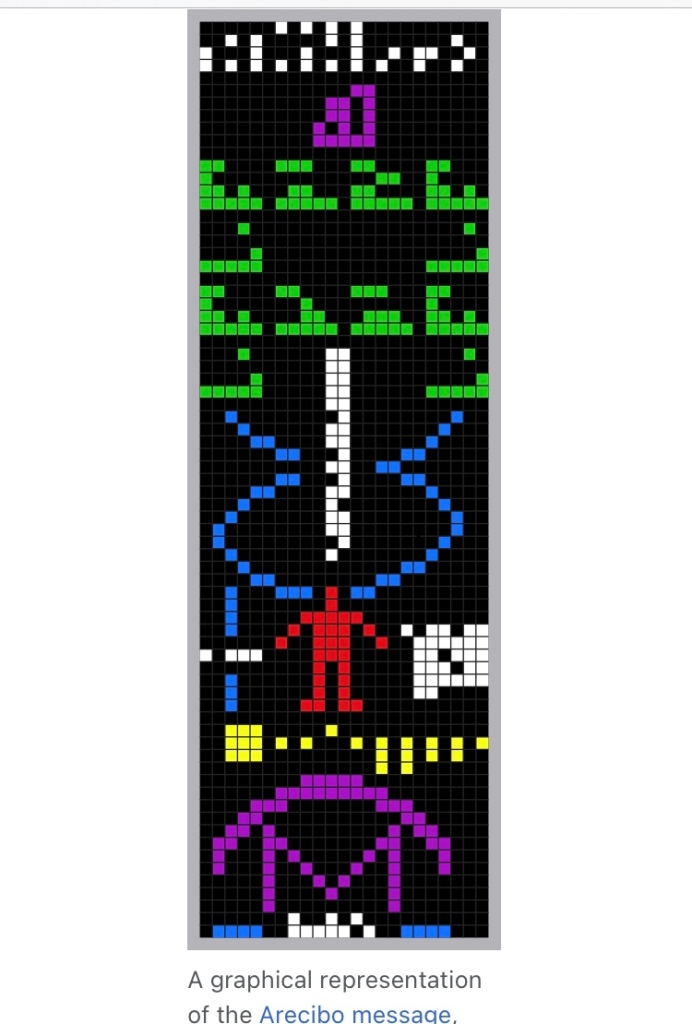With the recent disclosure by the American Army and Navy of unexplained sightings of flying objects, the question of extraterrestrial life comes back to the surface.
The famous Italian physicist Enrico Fermi summed up the question of extraterrestrial life in the summer of 1950 by saying, “But where is everybody?”
He was joking about the fact that we haven’t been contacted by aliens yet, although in theory they exist. This the Fermi Paradox.
The Fermi Paradox
The Fermi Paradox is: The apparent contradiction between the lack of evidence of extraterrestrial civilizations and various high estimates for their probability.
Our galaxy, the Milky Way, has between 100 and 400 billion stars and an estimated 1 trillion planets. There are millions of galaxies in the universe so extraterrestrial life should be a common occurrence.
There are several statements related to the Fermi paradox.
The aliens are listening to us but no one is transmitting anything back.
The aliens fear communicating with us because it’s considered dangerous.
Earth and humans are avoided to allow for its natural evolution and development to happen.
Alien life is already here but we don’t see it.
A series of possible scenarios have been put forth to explain the paradox.
1. Aliens do exist but are not communicating with us.
2. Aliens are communicating but we can’t hear them.
3. Aliens have been here but we weren’t here. (They came before humans were here as a species.)
4. Aliens exist but most people don’t know it yet.
5. Aliens have existed but now have disappeared. (The lifetime of the alien civilization was too short.)
6. We aren’t interesting for the aliens. (Only a few humans are interested by insect societies.)
7. We may already have received signals but didn’t realize it or understand them. (Dr. Frank Drake working with NASA was the founder of SETI, Search for Extraterrestrial Intelligence, in 1960, which uses radiotelescopes to listen for messages from space.)
First Contact
Issues with contacting E.T.
1. Should we try to contact aliens?
2. Who should speak for Earth?
3. What should we say?
In 2010, the English physicist Stephen Hawking said, “Aliens almost certainly exist but humanity should avoid making contact.” He explained that aliens might simply raid the Earth for resources and move on.
Too late! We have already disclosed data about Earth.
In 1972, Pioneer 10, then 11, space probes designed to fly by Jupiter and Saturn were launched. Following the recommendations of the American astronomer and cosmologist Carl Sagan, they contained a gold plated plaque with a physical representation of the date and location of Earth in the universe and a drawing of two human figures. They are still traveling at this time.

In 1974, a mathematical message designed by the American astronomer and astrophysicist Dr. Frank Drake was sent in space to the region of Magellan 31 with the help of the Arecibo radiotelescope in Puerto Rico. (The telescope collapsed in 2020 following the break of its main support cables.)
The Arecibo Message

In 1977, two robotic interstellar probes, Voyager 1 and 2, were launched from Cape Canaveral, in space so that they could take pictures of Jupiter and Saturn, then later of Uranus and Neptune. “Each space probe carries a gold-plated audio-visual disc in the event that either spacecraft is ever found by intelligent life-forms from other planetary systems. The discs carry photos of the Earth and its lifeforms, a range of scientific information, spoken greetings from the people” in 55 languages, and different “Sounds of Earth”, including music by famous composers and modern music. It also contains photos of Earth and the structure of our DNA!
As of 2021, the two probes are still operational and have reached the interstellar medium but are not beyond the boundaries of our solar System. They are still transmitting data.

In 1999, SETI at home started to use an army of 5 million amateur internet users to process data collected by radiotelescopes across the world.
This concludes an overview of our attempts to communicate with aliens. We have not yet received any consistent signal from outer space but we have only been listening for about 60 years, a mere second in spacetime. However, perhaps we should use caution before we continue to send out information in deep space. Who knows who could be listening!
Cami Michaels,
writer and amateur astronomer.
Cami is a retired physician, mother of four, and indie writer who loves science-fiction and fantasy. She has published a sci-fi fiction novel, “I Am Sheffrou” An Alien Love Story in July 2020. She is actively working on the second book of the Sheffrou Trilogy, “Betrayal”.
Sources: Inverse.com, Wikipedia, NASA.


You know, what if Earth is the only planet with life, and certainly with what passes for intellligent life?
LikeLike
Very unlikely but the problem is there might not be intelligent life close enough for us to be able to make contact. Ever.
LikeLike
The probability conversation doesn’t work, because we have no template from which to postulate, hypothesize, or test. This is the only universe we’ve ever known, and there’s plenty of it. But scientists do “know” one thing. Never, in all the years and labs, have a single cell, or anything that passes for life, spontaneously became alive. Also, they’ve discovered principles why it can’t happen.
LikeLike
Life has evolved on Earth. I don’t see why the same process can’t happen somewhere else. However we earthlings may never be able to find it but it’s nice to think it can happen somewhere else.
LikeLike